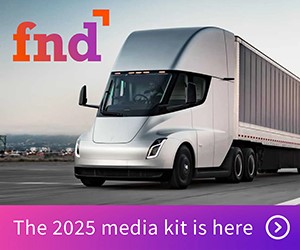‘Construction vehicle safety devices must be fit for purpose’ says technology specialist following publication of report
Equipment – especially safety equipment – needs to be able to cope with extreme weather, debris, dust and unstable ground
Following the publication of a report indicating there were over 1,000 fatal injuries in the construction industry during 2020 – hundreds of which came from transportation related incidents1 – Brigade Electronics is calling on the industry to ensure commercial vehicle safety devices are fit for purpose.
The report, released by the US Bureau of Labor Statistics, found that workers in demanding industries, such as construction and extraction, transportation and material moving accounted for nearly half of the 4,764 fatal occupational injuries.
Due to the size of construction vehicles and machinery, visibility can be limited for operators. Complex blind spots combined with tough conditions on construction sites can be a major contributing factor to collisions.
Corey Heniser, CEO of Brigade Electronics INC, commented:
“Many countries are committing to making it compulsory for safety devices to be fitted to vehicles, and this has helped the number of work-related deaths caused by moving vehicles to decrease, but there is still more that can be done. Heavy duty industries, such as construction, agriculture, quarrying and mining, operate in some of the most demanding environments.”
“Equipment – especially safety equipment – needs to be able to cope with extreme weather, debris, dust and unstable ground. We are encouraging fleet, plant and transport managers to take the environment into consideration when selecting safety devices to install onto construction equipment and machinery.”
Innovative safety technologies have been designed to alleviate the increased risk of working in environments where reduced visibility and demanding conditions are prevalent. Devices such as Brigade’s Backsense® radar obstacle detection systems, Backeye®360 cameras and monitors, bbs-tek® White Sound® reversing and warning alarms, and mobile digital recorders provide increased awareness that allows operators to react quickly during hazardous conditions.
Corey Heniser continued:
“Before selecting a device, managers need to look at the scenarios the safety products have been tested in. Have devices been put through rigorous assessments in multiple settings – like all Brigade products have – and proved to be waterproof, dustproof and shockproof, and effective in extremely low or high temperatures?”
“Fleet, plant and transport managers must be confident that the safety devices they install are tough, durable and reliable, and will protect their workers during the type of conditions experienced on construction sites.”
Category: Connected Fleet News, Driver Stuff, Featured, Fleet Diagnostics & Software, Fleet Tracking, General Update, News, Safety, Tech Talk











